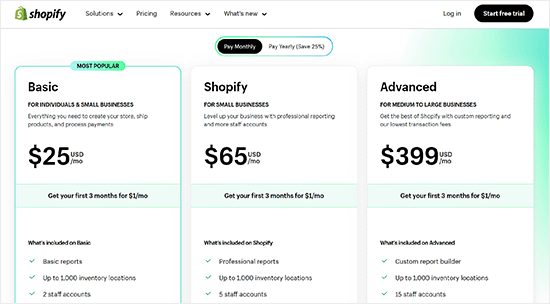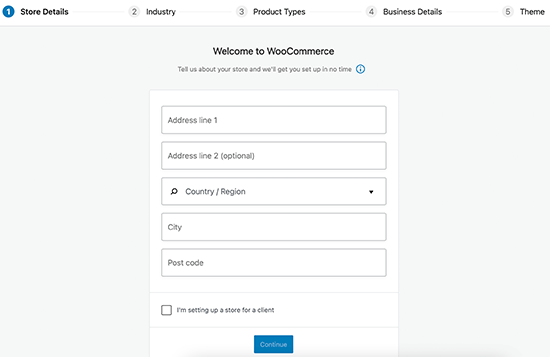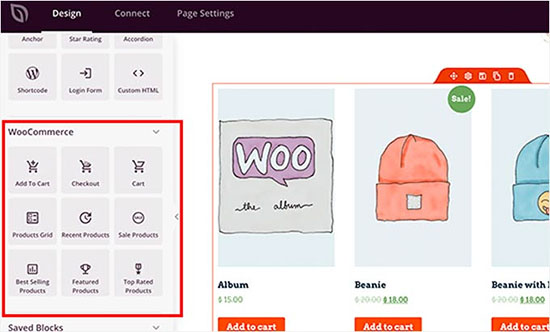
Shopify vs WooCommerce
Which E-Commerce Platform Should You Choose to Power Your Business? Dive into a Detailed Comparison and Make the Right Decision!
WooCommerce and Shopify are two of the most popular eCommerce platforms available today. Between the two, there are an estimated 5 million-plus users who’ve earned billions of dollars, globally. In this article, we compare WooCommerce vs Shopify so you can decide which is the best option for your online store. We’ll take a close look at each platform’s features, cost, user experience, customer support and more.
What is Shopify?
Shopify is an all-in-one eCommerce solution that makes it easy for you to create an online store, accept payments, and manage your inventory, all from a single platform.
With Shopify, you don’t need to worry about the technical aspects of managing an eCommerce site, such as web hosting, security, caching, etc.

What is WooCommerce?
WooCommerce is an open-source eCommerce plugin built for WordPress. It allows you to use the most powerful content management system (CMS) and use it to run an online store.
WordPress is the most popular website builder on the planet, powering 43% of all websites, and what many don’t know is that WooCommerce is the most popular eCommerce platform (yes, even more popular than Shopify).
Because of the open-source nature of WooCommerce, you can customise every aspect of your store and easily add custom extensions.
The decision to choose between the two platforms depends entirely on your needs and skill level.

What to Look for in Your eCommerce Platform
There are a few things that you absolutely need to keep in mind when starting an online store. These key factors will help you decide which platform is better suited for your needs:
- Budget – The initial cost of starting a fully functional eCommerce store.
- Ease of use – It should be easy to use even for absolute beginners.
- Payment Methods – It should have support for multiple payment methods (e.g., PayPal, Stripe, and other merchant processors).
- Integrations – The number of services and third-party tools you can integrate to grow your eCommerce business.
- Scalability – The platform should be able to scale as your business grows.
These are the very basic requirements that all online store owners must consider. However, depending on your needs, you may also want to look at other options like shipping, inventory management, invoicing, taxes, dropshipping, etc.
Our goal with this article is to take an in-depth look at how Shopify and WooCommerce stand on these basic requirements and which one of them is best suited for your needs.
That being said, let’s start our Shopify vs. WooCommerce comparison.
Cost: Shopify vs. WooCommerce
Cost is often the most important consideration for eCommerce website owners. You need to evaluate the cost of getting started while also keeping in mind the variable costs for add-on services and software.
The True Cost of Using Shopify
Shopify makes it super easy to start your online store. Their Basic plan starts at $25 per month, and you can upgrade to the Shopify plan for $65 or the Advanced Shopify plan for $399 per month.

The True Cost of Using WooCommerce
WooCommerce is an eCommerce plugin for WordPress.org (also known as self-hosted WordPress). It is open-source and available as a free plugin.
However, you’ll need a domain name, SSL certificate, and a WordPress hosting account to start a WooCommerce store.
Typically, a domain name costs $14.99, an SSL Certificate costs $69.99, and web hosting costs around $7.99 / month. This is not cheap, particularly when you are just starting.
Thankfully, there are several hosting companies that are now offering specialised WooCommerce hosting plans, which significantly reduce the cost.

Winner: WooCommerce
Ease of Use: Shopify vs. WooCommerce
Most users starting an online store are not web designers or developers. Even users who are familiar with basic concepts need a platform that is easy to use and gets out of their way.
Let’s see how Shopify and WooCommerce stack up in terms of user-friendliness.
Shopify – Ease of Use
Shopify is a fully hosted platform, which means you don’t need to install, manage, or update any software. You also don’t need to worry about security, performance, backups, and compatibility issues.
As soon as you sign up, you can choose a design from many of the free Shopify themes. After that, they walk you through customization and then help you add products.
Shopify comes with an intuitive drag-and-drop interface. Managing your product pages, sales, and inventory inside Shopify is so simple.
One downside of this guided, polished, and highly optimised user experience is that it limits your control. You can only use the design and development tools provided by Shopify or add-ons available in their marketplace.
However, this is not as bad as it sounds. For most users, the large selection of extensions and themes available in Shopify is more than enough to get started and grow your online store.
WooCommerce – Ease of Use
WooCommerce is not a hosted platform like Shopify. This means you will need to install the WooCommerce plugin, manage updates, keep backups, and make sure that your website is secure.
There are plenty of free and paid plugins that can automate most of these tasks for you.

WooCommerce is super flexible when it comes to customizations. You have full control of the whole platform. You can add any functionality imaginable to your website with the help of more than 59,000+ WordPress plugins.
However, there is no built-in drag-and-drop design builder. You can use one of the WordPress page builders like SeedProd.

The biggest downside of the flexibility is that it comes with a learning curve and requires more hands-on management of your website. You also have to sign up for a merchant account or similar service like Stripe / PayPal.
While the WooCommerce guided setup wizard is helpful, it does not come close to the onboarding experience and ease of use of Shopify.
Winner: Shopify
Scalability and Growth: Shopify vs. WooCommerce
You have probably heard the term “growing pains” from various CEOs and founders. As your business grows, you will need more resources to handle new challenges and goals.
Shopify and WooCommerce can both be scaled to handle a large amount of traffic and orders, but they’re not created equal. Let’s take a look at how these two eCommerce platforms compare when it comes to scalability.
Scalability on Shopify
Shopify handles the technical parts of your store, which means you don’t ever have to worry about performance, security, and scalability. Once your business starts growing, you can simply upgrade your Shopify plan.
Their infrastructure can easily handle your growing business without you having to worry about downtimes, backups, updates, or security. They also offer enterprise services as part of the Shopify Plus plan.
This takes out the painful part of the growth, but it also adds to your cost of business. Your expenses will grow, and you’ll have to plan accordingly.
The good part is that your costs will be offset by you not having to hire or manage a technical team in-house.
Scalability on WooCommerce
WooCommerce is a self-hosted platform, which makes you responsible for maintaining updates, backups, and security of your website.
Your starter WooCommerce hosting plan will run out of resources as your store starts getting more traffic.
The good news is that you have plenty of options to manage growth since you are in full control of your WordPress site.
Your WooCommerce hosting costs will increase, but you will have better control over the specific resources you upgrade, and you can make sure that you are not paying for resources that you don’t need.
You can even use a managed WordPress hosting provider like SiteGround or WP Engine to help scale your WooCommerce store.
Despite the control that WooCommerce offers, some small businesses simply prefer a hassle-free solution.
Winner: Shopify
Payment Methods: Shopify vs. WooCommerce
There are many payment gateways that you can use to accept payments online. Some payment methods may not be suitable for you, and others may not be available to your customers.
This is why it’s important that the platform you choose offers multiple payment options. Let’s take a look at how Shopify and WooCommerce compare when it comes to payment integrations.
Payment Options in Shopify
Shopify offers plenty of payment options that customers can use during checkout. It has its own payment solution called Shopify Payments (powered by Stripe), as well as all popular third-party payment gateways.

The problem is that Shopify charges an extra 2% fee on each transaction made through third-party payment gateways. This is on top of the transaction fees charged by the payment gateway. You can reduce the fee to 0.5% by paying $399 per month for the Advanced Shopify plan.
Shopify Payments has credit card fees but no other transaction fees. Credit card rates start from 2.9% + 30¢ for the basic plan and get lower for other plans.
Payment Options in WooCommerce
WooCommerce offers PayPal and Stripe payments by default. They also have a WooCommerce Payments solution, which is powered by Stripe.
It supports all other popular payment service providers as well. You can install payment integrations for Authorize.net, Amazon Pay, Square, Alipay, and many more.

For payment gateways, WooCommerce even has support for many regional and less popular payment services. Since there is no barrier to entry, any payment company can create add-ons for WooCommerce and provide support for it.
For example, you can use the free Stripe Payment Gateway for WooCommerce plugin by FunnelKit instead of the default WooCommerce option. It comes with extra features like an easy onboarding wizard, Google and Apple Pay express checkouts, and more.
As a self-hosted platform, you are only charged transaction fees by your payment gateway or your bank. Unless you are using WooCommerce Payments, WooCommerce never charges you a % fee on credit card payments, which is a major plus.
If choosing your own merchant account and using a third-party gateway is important for you, then you will save A LOT of money by using WooCommerce.
If you’re a small store and willing to use Shopify Payments, which has the same credit card rates as Stripe / Paypal, then it makes no difference.
Winner: Tie
WooCommerce vs. Shopify: Which is the Best eCommerce Platform?
Shopify and WooCommerce are both powerful platforms to start your eCommerce store. It truly comes down to your personal skills and preferences.
Shopify is a lot easier to use. It doesn’t require you to install anything, and you can get started quickly. Setting up payments is easier, and they have easy-to-understand pricing plans.
The disadvantage of Shopify is that you don’t have full control over everything. Your costs can go high with transaction fees, add-ons, and integrations. Your upgrade options are limited to select plans, and you cannot manage costs on a pay-as-you-grow basis.
WooCommerce is open-source and gives you full control of your website. It costs a lot less to start an online store with WooCommerce, especially with these WooCommerce hosting companies.
The disadvantage is that you’ll have to maintain the software. It comes with a bit of a learning curve. However, millions of beginners are already using it, and they get over the learning phase quite quickly.
If you are looking for a cost-effective solution and you want to have full control of your online store, then WooCommerce is the best platform for you.
If you want something that’s completely hassle-free with infinite scalability, then Shopify is the better platform for you.